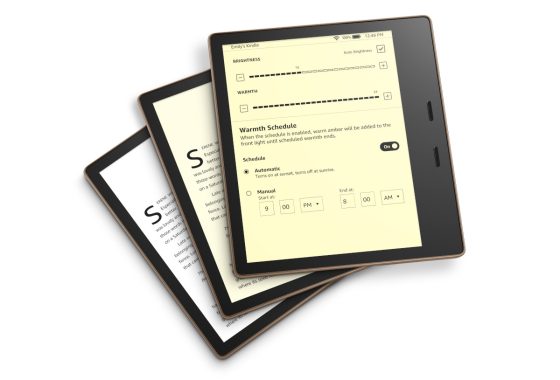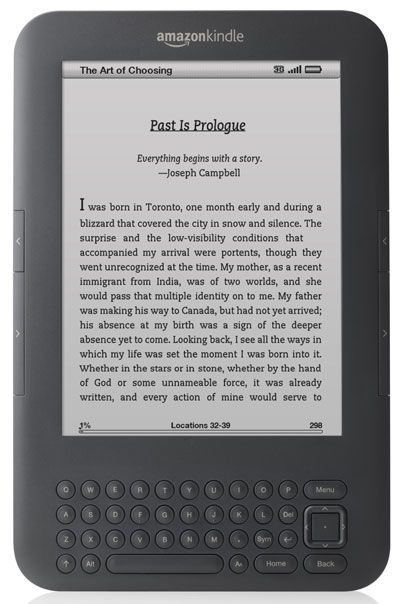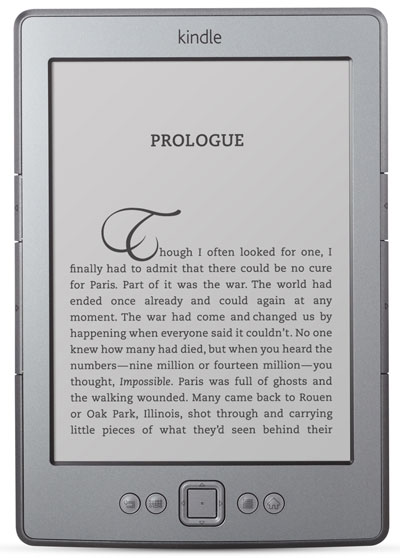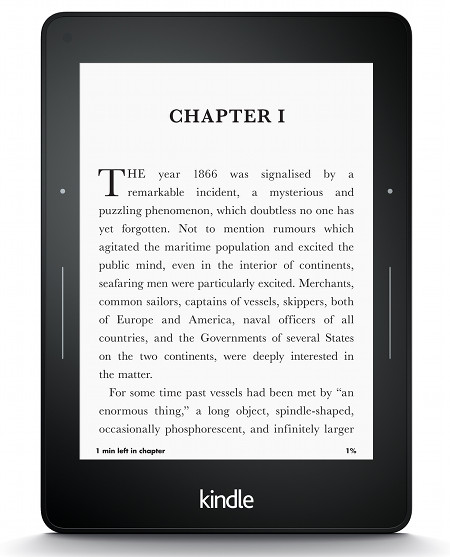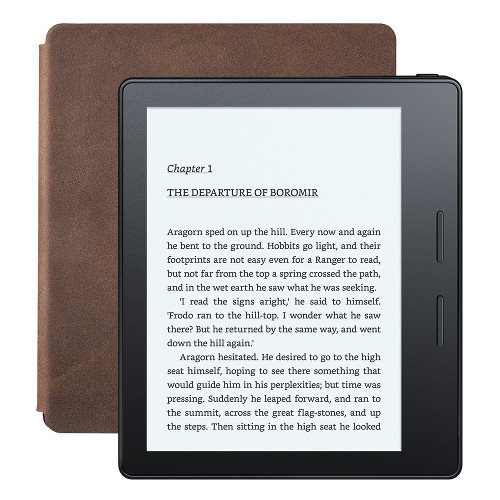One thing that’s interesting about Kindles is how some people prefer using older models over newer ones. Part of the problem is Amazon’s habit of changing the designs of Kindles that people liked in the past.
Now it’s gotten to the point where Amazon just basically keeps re-releasing the same Kindles over and over again. They’ve cycled through several different designs over the years, and they’ve pretty much settled on one specific design—the Kindle Paperwhite.
Amazon added a flush front layer to the Paperwhite in 2018, and they’ve just been making minor changes to that same general design ever since. The current basic Kindle is essentially a smaller and lighter version of the Kindle Paperwhite from 2012. It’s kind of sad that the older designs have been abandoned and there will most likely never be any Kindles like these ever again:
Keyboard Design
The first three generations of Kindles had built-in mini keyboards below the screens. These models didn’t have touchscreens so the keyboard and nav buttons were how you navigated the device.
The keyboard was convenient if you wanted to type notes or run searches. Frankly, it worked better and faster than today’s on-screen keyboards, and there were various shortcuts you could use to make things easier, but the physical keyboard took up a lot of space, and I doubt very many people miss that design today, but I’m sure some miss the simplicity of non-touchscreen Kindles, and the convenience of having page buttons on each side of the screen…
Page Buttons – Symmetrical Design
After Amazon phased out their early keyboard Kindles, they still kept the page buttons on the 4th and 5th generation basic Kindles. They did away with the keyboard so typing was more difficult, but they streamlined the overall design and that made the Kindle smaller and lighter and easier to handle. These were the last Kindles to not have touchscreens, and in some ways the designs were nicer and more refined than all the basic Kindles released since then.
Kindle Voyage – Premium and Side Buttons
Amazon would release one last model with page buttons and a symmetrical design—the Kindle Voyage, which was released in 2014. Some consider it the best Kindle ever released (myself included). It didn’t have physical buttons like earlier Kindles; it had sensor buttons that you could turn off if you didn’t want to use them. You could also adjust the amount of pressure required to activate them.
The Kindle Voyage was also the first Kindle with a “premium” design and a flush front glass layer, and it was the first Kindle to feature a 300ppi E Ink screen (and it’s still one of the best-looking screens ever released to this day).
A lot of people miss the Kindle Voyage and wish Amazon would release a newer version, but after a decade it’s safe to assume that’s never going to happen. It was a great design because you could choose to use the page-turn sensors or the touchscreen to turn pages, unlike the asymmetrical design that would come later.
Page Buttons – Asymmetrical Design
Instead of releasing a Kindle Voyage 2 and reusing aspects of classic Kindle designs, Amazon went in a completely different direction with the release of the 1st gen Kindle Oasis in 2016.
The Kindle Oasis brought an asymmetrical design to the Kindle lineup by only having buttons on one side of the screen, with a handle to hold onto. Amazon added a rotation sensor so you could use the buttons with either hand, but some people just didn’t like the asymmetrical design and having to use buttons.
Amazon would stick with a similar design for the next two Oasis models, and the Kindle Scribe also uses a similar handle-side design but without the page buttons.
At this point it doesn’t look like the Oasis design is coming back on smaller Kindles, and now that Amazon has phased out page buttons entirely on newer models, this is going to be another thing people miss now that it’s seemingly gone for good.


